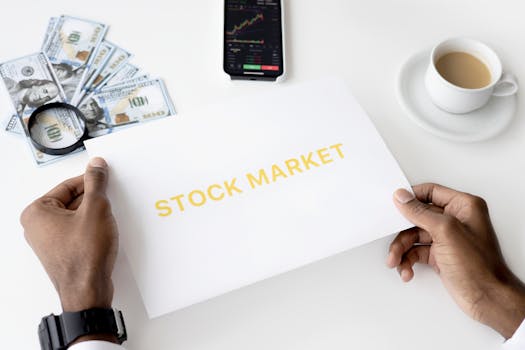Navigating your early steps with safe investments isn’t a leap, but more like a careful, steady walk. There’s comfort knowing that you don’t need a fortune to begin growing your wealth.
Many seek out simple, reliable safe investments as a starting point, hoping to avoid wild swings or risky bets. Smart choices today can pay off for decades—sometimes just with patience and steady habits.
This article is your toolkit for deciding which safe investments make sense and how to get familiar with them—so you’ll feel empowered, not overwhelmed, as you take action.
Start with High-Yield Savings and Certificates of Deposit for Stability
Safe investments like high-yield savings accounts and certificates of deposit (CDs) give beginners a straightforward way to grow cash while keeping risk low and access simple.
Opening a high-yield savings account can take less than fifteen minutes online, and you’ll see interest accumulate monthly—often outpacing what you’d get from a regular savings account.
Interest Rates: Checking the Fine Print
While high-yield savings accounts usually feature higher rates, some offer introductory bonuses. Read the rate details carefully, since the interest changes with the market environment.
If a friend says, “I want my cash safe, but still earning more than pennies,” recommend comparing a few top banks for their most recent rates—and check for hidden fees or withdrawal limits.
Bank statements will list the annual percentage yield (APY) clearly; use that figure to compare accounts directly so your safe investments are genuinely earning you more.
Knowing When to Lock In with CDs
CDs reward you for not touching your money. If you can commit for a set term—from six months up to five years—traditional CDs typically offer higher guaranteed rates.
Your neighbor might say, “I have $2,000 I don’t need soon.” Suggest they check if a 1-year CD fits, as breaking a CD early means losing some interest as a penalty.
The key is matching your savings goals to the CD term—if you might need the money, opt for a shorter period. Flexibility matters for beginners exploring safe investments.
| Product | Interest Rate | Minimum Balance | Takeaway |
|---|---|---|---|
| High-Yield Savings | Varies (0.50%-4.00%) | $0 or low | Ideal for emergency funds and fast access |
| 6-Month CD | 1.00%-3.50% | $500 — $1,000 | Short-term goal, mid-level return, penalty for early withdrawal |
| 12-Month CD | 1.50%-4.00% | $1,000 | Lock funds for a year to boost returns safely |
| Money Market Account | 0.75%-3.00% | $500 — $2,500 | Combines check-writing access with better rates |
| Regular Savings | 0.01%-0.05% | $0 | Best for minimal risk, but low returns |
Prioritize U.S. Treasury Securities When Uncertainty Rises
Treasury securities set the standard for truly safe investments. These government-backed products guarantee your principal and are easy to buy, even with small amounts, online or through many banks.
For anyone who’s wary of market swings—like retirees or cautious savers—things like Treasury bills, notes, or I Bonds give assurance that your money won’t vanish overnight.
Bond Laddering to Smooth Out Timing
Bond laddering means buying several Treasury bonds with different maturity dates. This way, you always have some bonds coming up for payout, reducing risk if rates change.
A simple process: Buy a 1-year, 2-year, and 3-year bond. Next year, reinvest the matured bond into another 3-year, and repeat. It’s steady, low-fuss, and very transparent.
- Buy Treasury securities through trusted platforms that outline the entire process, so you track each step and avoid unexpected fees or minimums.
- Always verify the maturity date before purchasing; this helps manage your expectations about when funds will be available again.
- Start with short-term bills for short-term needs and look at notes or bonds for longer-term security—matching your investment horizon to the product duration is smart strategy.
- Track interest payment dates in your calendar, ensuring you notice when earnings land and can decide whether to reinvest or withdraw.
- Read platform FAQs thoroughly—these often explain tax implications you may not have considered before locking up money in safe investments.
Sticking to these best practices makes safe investments even safer and more predictable. Try setting reminders for each new maturity and reinvest on schedule.
Using I Bonds for Inflation Protection
I Bonds offer unique protection against inflation, updating their interest payouts every six months based on current inflation rates. Your principal stays safe from eroding purchasing power.
Kathryn says, “My savings aren’t growing as fast as prices.” For her, adding I Bonds ensures she doesn’t fall behind inflation, keeping real value steady over time.
- Purchase I Bonds directly from the U.S. Treasury’s website and check the current composite interest rate before buying.
- Keep in mind the annual purchase limit: up to $10,000 per person electronically, which helps spread risk and maintains discipline.
- Remember, I Bonds can’t be cashed in for the first year. For access before five years, you’ll forfeit three months’ interest—a small tradeoff for protection and stability.
- Log in to your TreasuryDirect account at renewal time and review the new interest rate to assess whether further purchases fit your plan.
- Unlike other safe investments, I Bond interest is exempt from state and local taxes, benefiting those in higher-tax locations.
I Bonds combine reliability, inflation-fighting returns, and strict limits that force you to save methodically—with easy-to-follow online steps for first-time investors.
Choosing FDIC-Insured Accounts for Maximum Capital Safety
FDIC insurance covers up to $250,000 per depositor, per bank. This simple rule protects your safe investments in savings, CDs, or money market deposit accounts—even if the bank fails.
Beginners can relax knowing their principal is federally backed—verify the FDIC logo on websites or in branch offices before opening any account as a rule of thumb.
Structuring Accounts to Stay Insured
If your balances approach that insurance limit, open new accounts at different banks or under different ownership categories—joint, single, and trust—to cover each separate $250,000 tranche.
Tom organizes his family’s funds into individual and joint accounts across two banks. This simple structure keeps every dollar protected by the FDIC and easy to access if needed.
Check balances quarterly to avoid exceeding limits and restructure if needed. Splitting funds between accounts rarely adds complexity but always maintains maximum safe investments coverage.
Checklist: Keeping Your FDIC Insurance Intact
- Bookmark the FDIC’s coverage estimator tool and use it yearly to confirm account balances stay covered and never inadvertently exceed the $250,000 limit.
- Always double-check that accounts are in your name or another valid beneficiary; adding someone like a spouse can double your insured limit to $500,000.
- Never combine business and personal funds in the same account if you want both balances insured separately; separation matters for maximum protection.
- Review account statements for the “FDIC Member” note, and avoid banks without federal insurance—credit unions use a similar NCUSIF program you can verify too.
- Every new deposit account—CDs, money market deposit accounts, or savings—should be checked on both the institution site and FDIC database before funding.
Following this list ensures your safe investments are shielded against unlikely but devastating bank failures, so your peace of mind matches your financial goals.
Automate Monthly Investing with Robo-Advisors to Reduce Decision Paralysis
Letting technology take over regular investments may sound high-tech, but it’s built for busy schedules. Automated advisors invest small monthly deposits into diversified, safe investments with minimal hands-on attention.
This step removes guesswork; you simply schedule automatic transfers from your checking account. Robo-advisors pick a tailored mix based on your risk tolerance and investment horizon.
Setting Up a Robo-Advisor the First Week
Sign up online, answer a few risk and goal questions, and connect your bank. The algorithm then allocates your funds—mostly into ETFs, bonds, or cash reserves tailored for safe investments.
Martha says, “I wanted to invest but didn’t know what to buy.” Her robo-advisor picked a conservative mix, reporting her balance and performance to an app for easy tracking.
Every month, check your app for updates. Adjust the automatic contribution higher if your income rises—small increases over time make a major difference with safe investments.
Scenario: Keeping Emotions Out of the Process
Dan worries about market drops. A robo-advisor prevents him from selling impulsively, since it sticks to a disciplined process regardless of daily news. This encourages steady, rational investing.
Avoid logging in every day—monthly check-ins are enough. If you see a dip but the allocation remains on track, remember the automated system rides out temporary volatility in favor of long-term gains.
Imagine you’re tempted to pause contributions after a rough week—resist. Consistency means you buy both when the market’s low and high, which averages out risk.
Comparing Safe Investments on Stability, Access, and Returns
Organizing your choices makes it easier to pick the right safe investments for your current needs. Comparing core features highlights which vehicle fits your timeline, withdrawal habits, and comfort level.
The best choice will match your risk preferences, not just deliver the top returns. Review common investments on a few practical points to quickly narrow down your options.
| Investment Type | Liquidity (Withdrawal Ease) | Typical Return Range | Ideal For |
|---|---|---|---|
| High-Yield Savings | Immediate | 0.5%-4.0% | Emergency funds, daily savings |
| 12-mo CD | After term or penalty | 1.5%-4.0% | Short-term goals, rate guarantees |
| Treasury Bills | At maturity (4-52 weeks) | 3.0%-5.0% | Ultra-safe, short duration |
| I Bonds | After 1 year (penalty before 5 yrs) | 3.0%-7.0% (varies) | Inflation protection, long-term |
| Money Market | Flexible, some limits | 0.8%-3.5% | Check-writing access, steady growth |
Creating a Steady Schedule for Review and Rebalancing
Safe investments don’t require daily attention, but a regular calendar check-in ensures your cash stays protected and aligned to changing goals. Pencil in two to four reviews per year as a guideline.
If your emergency fund grows above six months’ needs, shift excess into CDs or I Bonds for better returns. Realigning funds is a key move that preserves both liquidity and rate potential.
Step-by-Step: Quarterly Investment Review
Schedule reminders for January, April, July, and October. Review each safe investment for growth, upcoming maturity, or rate changes to maximize your yield—use a spreadsheet for clarity.
If a rate drops or your goals change (maybe you’re eyeing a car purchase), adjust by moving money between products or increasing your monthly automated investment. Avoid set-and-forget habits.
When reviewing, jot a sentence for each account in your spreadsheet: “Keep, add, or withdraw?” This hack keeps decisions simple and actions obvious every quarter.
Staying on Track When Life Shifts
If kids enter college, retirement nears, or a home purchase approaches, recalibrate how much stays liquid versus how much is locked away. Write changes in your notebook to track shifting needs.
Dan checks his account every April before tax time, adjusting I Bond purchases and CD maturities so he never leaves money languishing at low rates. Staying flexible preserves financial momentum.
Don’t be rigid: Life rarely follows a perfect curve. Adjust safe investments incrementally, aiming for both security and readiness for anything new on the horizon.
Building Confidence by Sticking to Safe Investing Habits
Consistent review and adjustment is the cornerstone for confidence. Each action, from checking rates to moving funds or setting reminders, converts uncertainty into know-how with safe investments.
Your toolkit grows with every decision, making you more attuned to subtle changes in rates or new products that fit your savings style. Momentum builds as you notice results add up.
Safe investments form a strong base as you develop savvy habits. Over time, the discipline and clarity you gain here unlock bigger opportunities—each one built on a solid foundation.



